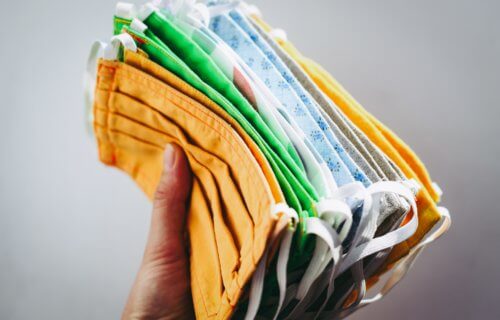MELBOURNE, Australia — If you decide to go the DIY route and make your own face masks, be sure to include at least two layers. According to a new study, three layers is ideal for a homemade face mask, but two are enough to get the job done. Just one layer isn’t going to slow or stop the spread of COVID-19.
As has been discussed ad nauseam over the past few months, face masks can stop the distribution of viral droplets whenever a wearer coughs, sneezes, or breathes. In this way, face masks can both protect healthy individuals from contracting the coronavirus and prevent infected individuals from spreading COVID-19.
However, supplies of surgical face masks have run low all over the world, prompting many people to make their own. Even the CDC recommends that Americans make their own mask if they can’t find one any other way.
Putting face masks to the test
For the study, Australian researchers sought to ascertain the best possible way to construct a homemade face mask. They compared the droplet reduction effectiveness of single and double-layer cloth face coverings (175 g/m² cotton fabric, with a thread count of 170/ inch) to a typical 3-ply surgical face mask (Bao Thach).
They constructed the single layer DIY mask using hair ties and a folded portion of a cotton t-shirt. The double layer mask was built using a sew method, as explained by the CDC.
CLICK HERE TO SUBSCRIBE TO OUR NEWSLETTER & GET THE LATEST STUDIES FROM STUDYFINDS.ORG BY EMAIL!
Next, a high-speed camera and specialized LED lighting system were used to film and record the distribution of airborne droplets emitted by a healthy person (no respiratory infection). The subject talked, coughed, and sneezed while wearing all three mask variations.
The ensuing video recordings reveal that the three-ply surgical mask is the most effective at curbing droplet dispersal. Still, both the two-layer and single-layer masks provide a certain degree of protection when the wearer is only speaking. The two-ply mask, though, does a much better job at reducing the spread of droplets in the event of a cough or sneeze.
Not all masks made equal
The study’s authors caution that numerous factors can potentially influence the effectiveness of a face mask. Those factors include the material, design, fit, and how often the mask is washed.
Still, researchers say it is advisable to always add at least two layers to a homemade face mask.
“Guidelines on home-made cloth masks should stipulate multiple layers,” the study reads. “There is a need for more evidence to inform safer cloth mask design, and countries should ensure adequate manufacturing or procurement of surgical masks.”
The study is published in the journal Thorax.
Related Studies:
- Worst face masks: Bandanas, neck gaiters may be MORE harmful than not wearing mask
- Study: 6 Feet Social Distancing Guidelines Insufficient — Coronavirus Can Travel 18 Feet In 5 Seconds!
Like studies? Follow us on Facebook!
